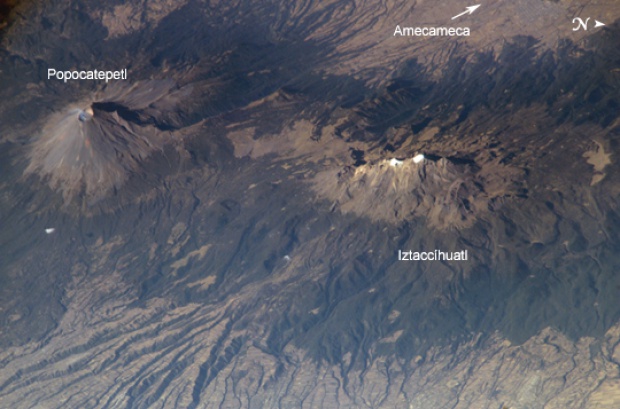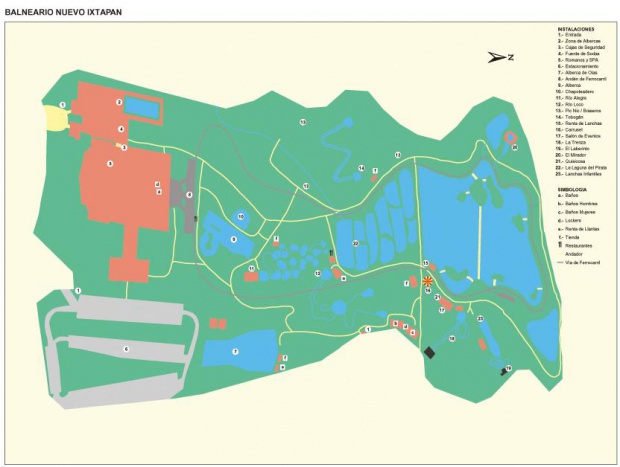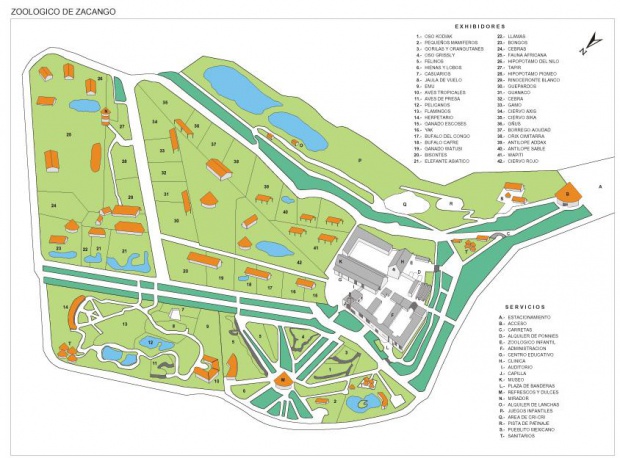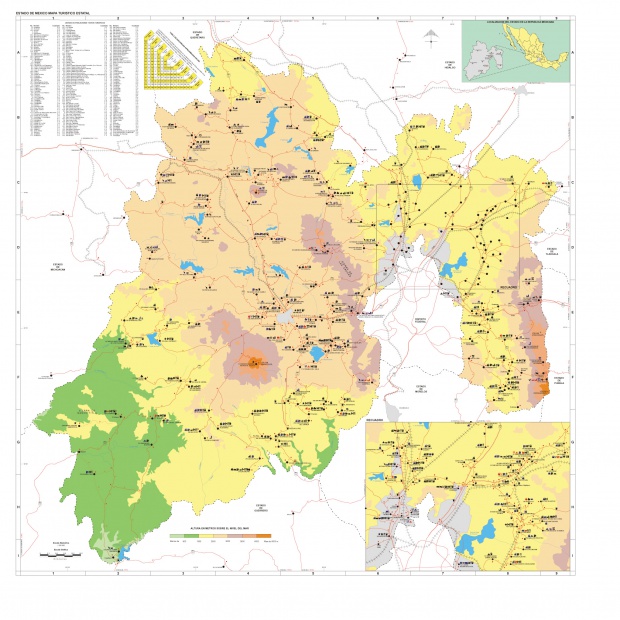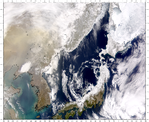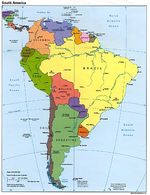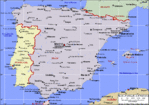
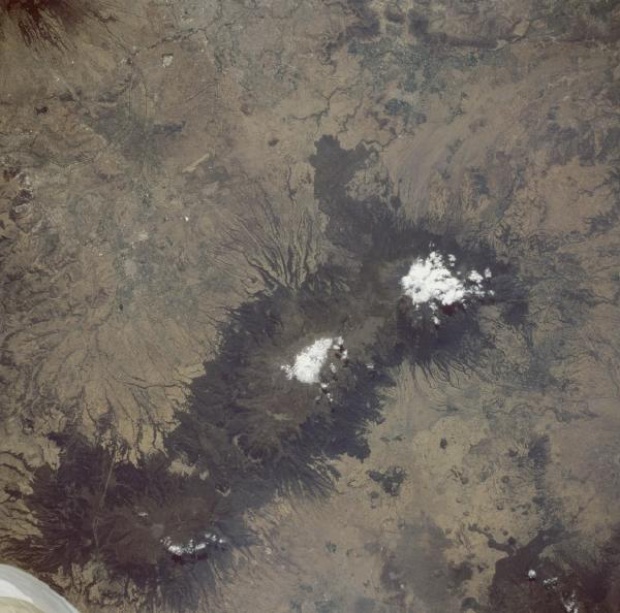
Tres volcanes, alineados en una dirección general Norte-Sur y situados alrededor de 72 kilómetros al Sureste de la Ciudad de México en la meseta mexicana, son claramente visibles en esta imagen. El clásico patron de drenaje de erosión asociado con muchos volcanes compuestos de ceniza explosiva y con flujos ocasionales de lava es bastante evidente alrededor de los flancos de todos estos volcanes. En una inspección cercana, numerosos conos de ceniza se pueden ver, especialmente en los llanos al oeste de los volcanes. Dos de los volcanes, Iztaccihuatl (5,285 metros) y Popocatépetl (5,452 metros) estan cubiertos de nieve en sus cumbres. Las nubes oscurecen parcialmente el gran cráter oval de Popocatépetl que mide aproximadamente 600 metros de diámetro y más de 150 metros de profundidad. El Popocatepetl situado más al Sur es el volcán más famoso de México. El significado de su nombre se deriva de una antigua palabra azteca "la montaña que fumaba." Las erupciones del volcán a mediados de los años 90 pusieron a la Ciudad de México y a comunidades circundantes en alerta. Las ultimas erupciones del Popocatépetl antes de mediados de los años 1990 ocurrieron en el siglo decimo séptimo. La forma linear al Este del volcán parece ser una pista de aterrizaje de un aeropuerto.
Fuente: National Aeronautics and Space Administration - NASA/JPL/NIMA

